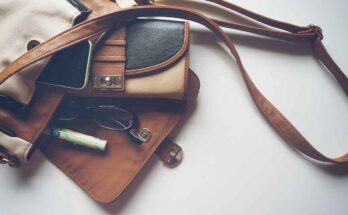Discover the 7 popular fabrics for men’s African attire that blend tradition and style, ensuring a fashionable statement for any occasion.
This is particularly true when it comes to African wear for men since the fabric in use defines the elegance of the wear as well as the comfort of the person wearing it. The clothes African are more cultural and thus the fabrics that are used in the apparels. Beginning with formal occasions to everyday strolls, an appropriate fabric takes any dress to the next level. This piece will also seek to provide information on seven different fabrics used in making African male attire and distinctive features and application of each of them.
1. Ankara
Ankara, also commonly referenced as African wax print, is one of the most well known fabrics for African menswear. Popular due to its colorful and distinct look, Ankara fabric is incorporated in many designs of shirts, pants and even suits. It can be used everyday or for special events and festive occasions hence its versatility. It is thereby not surprising that the wax prints often bear cultural connotations, where every design has a story to tell or represents an ideology, which makes Ankara a fabric and also an artwork.
Also Read: 6 Color Combinations for Stunning African Theme Outfits
2. Kente
Kente cloth is an authentic type of clothing from the Blacks especially from the people of Ghana and is seen as special in the modern African society. Kente has geometrical designs with bold colours, which makes it to be used in the traditional garments during important occasions. Kente can also be worn by men and this can be in the form of agbada well made to suit the occasion or used as a shawl. The material is silk and cotton and the outside of the robe is made of silk which makes it comfortable to wear. Kente products are associated with African origins hence the culture of wearing Kente garments during weddings, graduation among other special occasions.
Also Read: 7 Stunning African-Themed Dresses to Inspire You
3. Aso Oke
Aso Oke is a conventional hand-woven texture that started from Yoruba individuals of Nigeria. It is characterized by its feel and thickness – the designs can be very complex and the colors bright. Aso Oke grows are normally used in ceremonial occasions such as wedding ceremonies and festivals. The Aso Oke in its traditional use is worn by the males in the form of buba, which is a type of free hanging gown and sokoto, which is the trouser. This fabric is not only artistic but also symbolizes culture and most importantly it captures an artist’s effort thus making it the most preferred fabric by African men.
Also Read: African Mens Clothing
4. Batik
Batik is another fancy fabric employed in African clothing for men and has a special dyeing process. The process of waxing is done on the fabric before dyeing with a view of producing different patterns and designs. Islamic countries are widely employing this batik and is used in west Africa to produce shirts, shorts and other clothes and other traditional wears. Due to its loose weave the batik is cool that makes it ideal for hot climate without having to compromise on the dress code.
5. Linen
Linen on the other hand is a light fabric that has vents that allow air flow thus is appropriate for hot climate, this makes linen appropriate African wear for men. Preferably applied in the casual shirts and trousers, linen is a fabric that gives an ambiance of relaxed but cute. This product can be easily matched with boldly colored African fabrics or can be worn alone for simplicity. The fabric itself is soft because of the natural fibers of linen and can be used in occasions, formal or casual.
6. Cotton
Of all the fabrics used in the African dress code for males none is more versatile than cotton. It is soft, can breathe well, and is also not very hard to wash and take care of; thus, it can be used when making different outfits. Namely, cotton can be both rather casual when used in such items as a t-shirt or jeans and formal when utilized in traditional patterns and design. The material used in the attire is mostly colorful where it is printed or embroidered to ensure that there is a different design on most of the wears. For that reason cotton has turned into the most favored texture for men’s clothing and ought to be a piece of any man’s closet.
7. Velvet
In more official occasions, velvet is a classy fabric that gives the African attire for men a touch of class. Often associated with softness and an opulent material, velvet can be utilized in a well-fitted suit, a jacket or in traditional clothing. Despite the fact it has rivet looks it is not as frequently used like other fabrics but it can be used effectively for special events. Velvet is usually combined with other materials to get a great appearance of the clothes that would seem to draw attention.
Conclusion
The choice of an appropriate fabric is a very crucial factor when it comes to African men’s wear. All these fabric types are unique in as much as their history, style and comfort and so it’s more advisable to look at the occasion and personal preference. As it was highlighted earlier, no matter the choice of the dress between the colourful ankara and the lavish Kente, all the fabrics detailed in this article are testimony to African fashion. Celebrate your roots and be unique in these fabulous fabrics to wirk for any occassion your African wear will not go unnoticed.
When searching for your next dress, understand that the cloth is so much more than a cloth; it is a civilization, a group’s character, and a personality. So maybe you should take some time to discover the potentials, and try to make your clothes look brighter and richer than African men’s clothing.




Thank you for your post. I really enjoyed reading it, especially because it addressed my issue. It helped me a lot and I hope it will also help others.
Thank you for your post. I really enjoyed reading it, especially because it addressed my issue. It helped me a lot and I hope it will also help others.
You’ve the most impressive websites.
Thank you for writing this post. I like the subject too.
Your articles are very helpful to me. May I request more information?